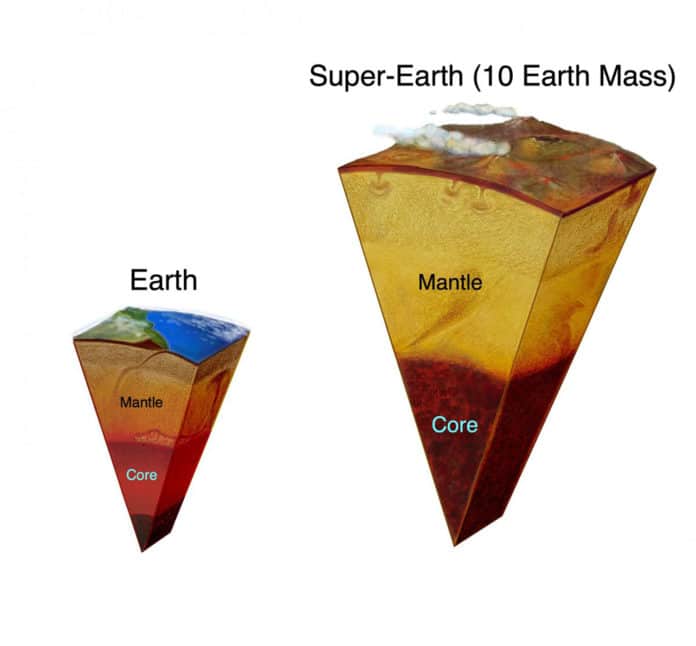Astronomers have discovered a lot of exoplanets until now. Now that so many exoplanets have been identified, scientists are studying their formation and habitability.
To determine their potential of habitability, it is essential to understand the forces at work in the interiors of exoplanets.
Using a lab-based mimicry, a new study led by Carnegie’s Earth and Planets Laboratory has unraveled a new crystal structure that has significant implications for our understanding of the interiors of large, rocky exoplanets.
Carnegie’s Rajkrishna Dutta, the lead author, said, “The interior dynamics of our planet are crucial for maintaining a surface environment where life can thrive—driving the geodynamo that creates our magnetic field and shaping the composition of our atmosphere. The conditions found in the depths of large, rocky exoplanets such as super-Earths would be even more extreme.”
Earth’s mantle is made of silicate materials. The same materials are thought to be a significant component of the interiors of other rocky planets. On Earth, the structural changes induced in silicates under high pressure and temperature conditions define key boundaries in Earth’s deep interior, like that between the upper and lower mantle.
In this new study, scientists wanted to probe the emergence and behavior of new forms of silicate under conditions mimicking those found in exoplanets.
Thomas Duffy of Princeton University said, “For decades, Carnegie researchers have been leaders at recreating the conditions of planetary interiors by putting small samples of material under immense pressures and high temperatures.”
There are some limitations on recreating the conditions of exoplanetary interiors in the lab. The theoretical modeling suggests that new silicate phases emerge under the pressures found in mantles of rocky exoplanets. However, scientists have not observed such a transition.
Germanium is a good alternative to silicon. Both elements have similar crystalline structures with a slight difference: germanium induces transitions between chemical phases at lower temperatures and pressures, which are more manageable to create in laboratory experiments.
Scientists used magnesium germanate, Mg2GeO4, to obtain information about the potential mineralogy of super-Earths and other large, rocky exoplanets. Mg2GeO4 is analogous to one of the mantle’s most abundant silicate minerals.
Scientists noted, “Under about 2 million times normal atmospheric pressure, a new phase emerged with a distinct crystalline structure that involves one germanium bonded with eight oxygens.”
Carnegie’s Sally June Tracy said, “The discovery that under extreme pressures, silicates could take on a structure-oriented around six bonds, rather than four, was a total game-changer in terms of scientists’ understanding of deep Earth dynamics. The discovery of an eightfold orientation could have similarly revolutionary implications for how we think about the dynamics of exoplanet interiors.”
Journal Reference:
- Rajkrishna Dutta et al. Ultrahigh-pressure disordered eight-coordinated phase of Mg2GeO4: Analogue for super-Earth mantles. DOI: 10.1073/pnas.2114424119
